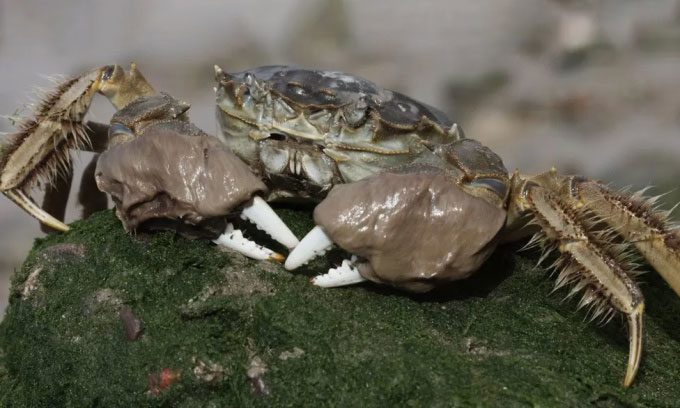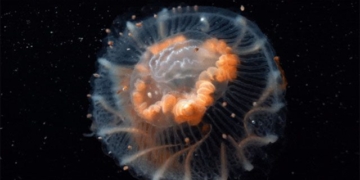The Chinese mitten crab – an invasive species with a rapidly increasing population – has led authorities in the UK to advise residents to report sightings.
Chinese mitten crab (Eriocheir sinensis), also known as hairy crab or Shanghai crab, is a crustacean native to East Asia, as reported by New Scientist on October 13. They are characterized by their furry claws resembling gloves. Their bodies are grayish-blue or dark brown, typically reaching about 8 cm in length, but their legs can extend twice that length.

Chinese mitten crabs can grow as large as a plate, with distinctive fur on their legs. (Photo: Mikelane45/Getty).
Over the past century, the Chinese mitten crab has spread to various regions worldwide, including Europe and North America, where they are considered an invasive species. They typically inhabit freshwater environments such as rivers, canals, and estuaries.
The Chinese mitten crab can damage ecosystems by burrowing under riverbeds, obstructing waterways, and damaging fishing gear with their sharp claws. Experts are also concerned that they may consume fish eggs and deplete resources of native species.
This species was first discovered in the UK in 1935 in the River Thames. Since then, they have been present throughout England. Recently, residents have spotted large numbers of mitten crabs around the waterways in Cambridgeshire.
The Natural History Museum is running a program called “Mitten Crab Monitoring”, urging the public to report sightings of these crabs. The UK’s Department for Environment, Food & Rural Affairs is also encouraging people to submit reports when they encounter mitten crabs. This could help experts track the population and prevent the spread of their eggs.
“The numbers are increasing because they have a very unusual lifestyle. After migrating downstream, mature females can produce three batches of eggs,” explained Paul Clark, an expert at the Natural History Museum. Clark noted that each batch can consist of 500,000 to 1,000,000 eggs.
To address the growing population of mitten crabs in the UK, the Lincolnshire Wildlife Trust, Welland and Deepings Drainage Board, and the Natural History Museum collaborated to install the first permanent mitten crab traps in Pode Hole, Lincolnshire, last August.


















































